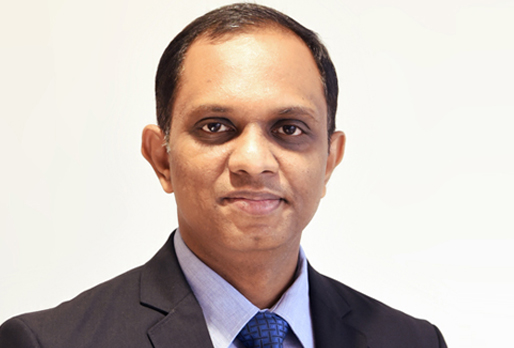TechCircle interviewed Mr Harnath Babu, Chief Information Officer at KPMG in India to get his views on the future of work, workplaces and the workforce. Here’re his responses and views:
Can a digital workplace be more productive than a physical one? How are you driving the future of workforce agenda at your organisation?
Today’s always-connected environment has blurred the lines between the physical workplace and the place where the actual work happens. Definitely, a digital workplace can be more productive than the physical one by giving employees access to the right technology and tools that they require to perform their work without any disruption. The key to success, however, lies in the efficient implementation of a digital workplace strategy that helps in setting the right foundation for driving cultural change.
Make your inbox more interesting.
Subscribe to our newsletter.At KPMG in India, our commitment lies in maintaining maximum flexibility with minimum constraints as we focus on performance. With the agile working environment, our employees are given the flexibility to control their schedules and manage work accordingly. In the COVID-19 crisis, we implemented work from anywhere for 100 per cent of the employees by ensuring that the right IT infrastructure is provided to them to work conveniently from their homes.
We considered the different needs of our multi-generational workforce and focused on strengthening and optimising the processes aimed at delivering the best possible digital workplace experience to our employees.
We have created a digital collaboration environment where teams can work together – irrespective of their location. For this, we have deployed cloud-based communication and collaboration technology tools that help them connect virtually. We also enabled the IT support system to work remotely as providing prompt assistance to employees for any IT-related concern is pivotal to facilitating a digital workspace.
Another aspect that we are on top of is protection against cyberthreats. Several measures have been taken to secure the user endpoints against phishing and ransomware attacks. These include the deployment of the right technology tools, user awareness, etc.
What were the critical challenges that your organisation encountered in establishing a strategy of future workforce?
While we at KPMG in India already have an agile working environment, COVID-19 accelerated the implementation of a digital workplace for the entire workforce.
We started with our business continuity plan (BCP) by ensuring the availability of the critical infrastructure enhanced by network bandwidth and VPN capacity so that employees could work from a remote location and access enterprise applications securely as well as without any disruption. Our IT support team played an instrumental role in helping the business promptly address any technical issue by providing the necessary guidance whenever required just in time.
Furthermore, to maintain data security and compliance, we are regularly updating user endpoints with the latest security patches. Our team is also monitoring tools as well as incidents to ensure delivery-efficient operations.
Now as we resume back to office and make a cultural leap, we are moving towards hot-desking while ensuring social distancing at work. We are also focusing more on agile ways of working with an aim to improve work efficacy and productivity.

How are you embracing the collaboration solutions for more productive workflows?
We are leveraging cloud-based audio and video-conferencing platforms that help communicate and collaborate efficiently, thus not hampering employee productivity.
We have also deployed document collaboration tools and digital whiteboards to make collaboration easier and blur the boundaries of physical location. Employees can easily connect and work together from wherever they are.
Would a digital workforce restrict opportunities for the working class in India? What are your views on this?
No, in my opinion, a digital workforce would not restrict opportunities, rather they would create new opportunities for everyone. As we adopt technologies such as AI, RPA and IoT, we will have the capability of a digital workforce, which would ultimately create a new workforce generation having a higher position in the value chain.
With the advancement in AI-driven technologies and robotics, more work will be done by smart machines. Virtual assistants would be there to respond to user queries in real-time and perform operational activities. This will ensure that our employees are focusing on critical business activities.
Alongside as RPA would continue to automate repetitive tasks, data aggregation, analysis, etc., our teams would eventually save time and make quicker, more informed business decisions.
To keep up with the cultural shift, the need of the hour is to upskill yourself to stay competent and resilient in the present business landscape that is constantly evolving.
How are you rethinking work, workforce and workplace strategy for your organisation? What is the future architecture that organisations should follow to enable shared workforce resilience?
As we move to the New Normal, work, workforce and workplace will not look like they used to. This is the time for organisations to drive digital transformation and move our working lives online.
At KPMG in India, we are focusing on a balanced approach wherein only the required employees visit office while the rest connect digitally.
We are, at the same time, focusing on strengthening the security posture and ensuring business-critical and client confidential data remains completely safe and secure.
To enable shared workforce resilience, organisations must focus on more agile ways of working. In the New Normal, workplaces will be about fewer employees and more space as opposed to how it used to be earlier – doing more with less space while creating a productive environment. This could not only mean redesigning workstations to reduce/avoid employee contact but also doing away with the collaboration workspace.
What are your views on the changing workforce shape, from the internal workforce to exploring an extended talent ecosystem?
Digital technologies are completely changing the way work is done across industries. While it may have become challenging for companies to identify and acquire skilled talent required for new business models, it is no more confined to role specification. It is all about having diverse skills to meet the ever-evolving workforce shape in today’s digital era.
This will give rise to the extended talent ecosystem and gig workers who will play a pivotal role in the future of work for the flexibility as well as cost benefits they offer. Organisations should focus on having multiple talent pools with the latest skills, capabilities and experience so that they can efficiently manage the current market/business demands while not changing their fixed cost.
Harnath Babu is the CIO at KPMG in India. He is leading and supporting the firm in digital transformation through emerging enterprise technologies and strategic initiatives. As a dynamic IT leader with over 20 years of experience in the industry, Harnath spearheads initiatives that help drive new agile engineering capabilities while delivering innovative IT and digital capabilities that transform businesses as well as deliver an improved customer experience. Prior to joining KPMG in India, he has worked in leadership roles with India’s leading private Insurance companies and helped them with their business strategies via a host of transformations including Digital, Infrastructure, Process and Operations.


